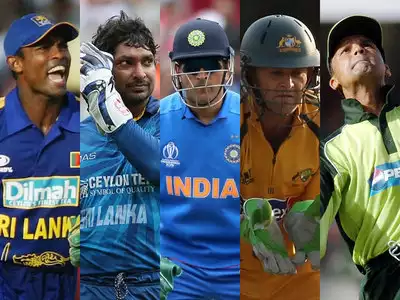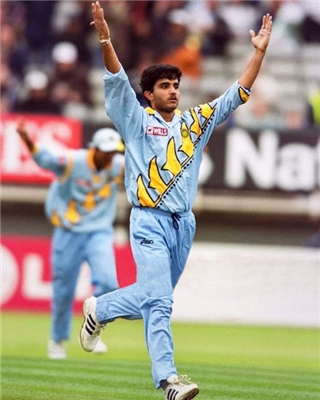Most underrated Cricketer

In the grand tapestry of cricket, there are stars that shine brightly, capturing the attention of fans worldwide with their flamboyant performances and remarkable achievements. Yet, amidst the glittering galaxy of cricketing superstars, there exists a cadre of players who often go unnoticed, their contributions overshadowed by the brilliance of their more celebrated counterparts. These unsung heroes, the most underrated cricketers, deserve recognition for their invaluable contributions to the game.
One such player who epitomizes the essence of an underrated cricketer is New Zealand’s Grant Elliott. Despite not being a household name in the cricketing world, Elliott’s impact on the game is profound. He rose to prominence during the 2015 ICC Cricket World Cup, where his heroic innings in the semi-final against South Africa guided New Zealand to their maiden World Cup final. His composed knock under pressure not only propelled his team to victory but also etched his name in cricketing folklore. However, Elliott’s contributions extend beyond that memorable innings, as he played a crucial role in New Zealand’s success in limited-overs cricket during his career.
Another unsung hero of the cricketing world is England’s Graham Thorpe. In an era dominated by star-studded batting line-ups, Thorpe’s elegance and reliability often went unnoticed. A mainstay in the English middle-order for over a decade, Thorpe was a pillar of consistency, anchoring innings with his impeccable technique and astute cricketing acumen. Despite facing the daunting task of batting in the demanding English conditions, Thorpe amassed over 20,000 international runs across formats, a testament to his remarkable skill and resilience.
Moving to the bowling department, India’s Javagal Srinath stands out as one of the most underrated fast bowlers in cricketing history. Overshadowed by the likes of Wasim Akram, Glenn McGrath, and Courtney Walsh during his playing days, Srinath was a formidable force in his own right. His ability to generate pace and extract bounce from seemingly docile pitches made him a potent threat to batsmen around the world. Srinath’s contributions played a pivotal role in India’s success in both Test and ODI cricket during the 1990s and early 2000s, yet his name often fades into the background when discussions about great fast bowlers arise.
In the realm of spin bowling, Pakistan’s Mushtaq Ahmed often finds himself overlooked despite being one of the finest leg-spinners of his generation. Mushtaq’s mesmerizing variations and deceptive flight bamboozled batsmen on numerous occasions, earning him accolades from cricketing pundits and peers alike. However, his legacy remains somewhat underrated, overshadowed by the exploits of spin bowling maestros such as Shane Warne and Anil Kumble.
Most Underrated cricketer
1. Mike Hussey (Australia)

Nicknamed “Mr. Cricket,” Hussey’s remarkable consistency and ability to perform under pressure often went unnoticed compared to some of his more high-profile teammates. Mike Hussey, fondly known as “Mr. Cricket,” is a revered figure in the annals of Australian cricket. Born on May 27, 1975, in Western Australia, Hussey’s journey to cricketing stardom is a testament to his resilience and unwavering passion for the game. He made his debut for Australia in 2004 at the age of 28, a relatively late start for an international cricketer. However, Hussey wasted no time in making his mark, showcasing his exceptional batting prowess and unflappable temperament on the field. His ability to anchor innings, finish games, and thrive under pressure quickly endeared him to fans and teammates alike. Throughout his illustrious career, Hussey amassed over 12,000 runs in international cricket across all formats, including 19 centuries and 55 half-centuries. He played a pivotal role in Australia’s dominance in the mid-2000s, contributing significantly to multiple Ashes victories and World Cup triumphs. Beyond his on-field exploits, Hussey’s humility, professionalism, and leadership qualities set him apart as a role model for aspiring cricketers worldwide. After retiring from international cricket in 2013, Hussey continued to ply his trade in various domestic T20 leagues, further cementing his legacy as one of the game’s true legends.
2. Grant Elliott (New Zealand)
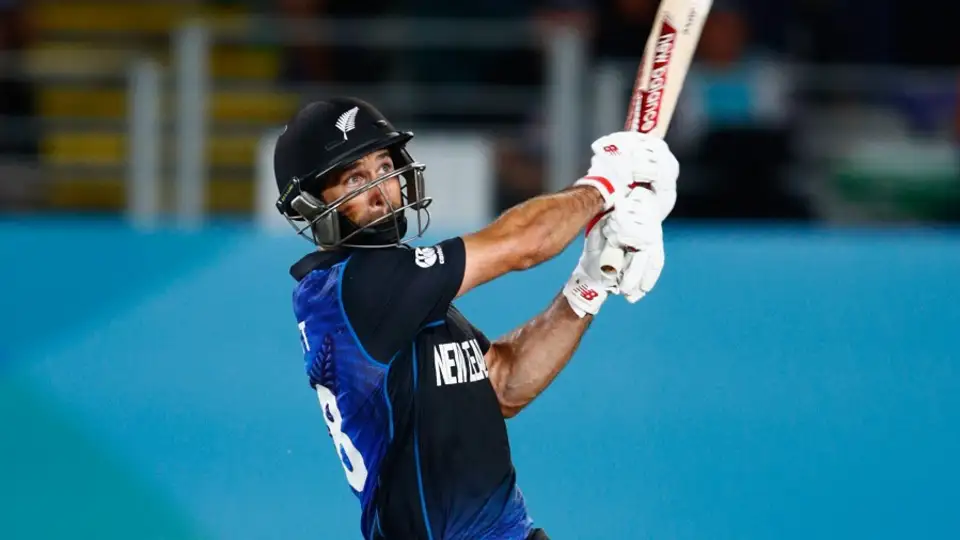
Born on March 21, 1979, in Johannesburg, South Africa, Elliott’s journey to becoming a cricketing icon was nothing short of extraordinary. Despite facing challenges early in his career, including being sidelined from international cricket due to injury, Elliott’s determination and resilience propelled him to success. He made his debut for New Zealand in 2008, and it was during the 2015 ICC Cricket World Cup that he etched his name in cricketing folklore. In the semi-final against South Africa, Elliott played a heroic innings, guiding New Zealand to victory with a composed and match-winning knock. This iconic moment not only secured New Zealand’s place in the World Cup final but also endeared Elliott to cricket fans worldwide. Throughout his international career, Elliott showcased his versatility as a batsman and a handy medium-pacer, contributing valuable performances in both the ODI and T20 formats. Beyond his on-field exploits, Elliott’s sportsmanship, humility, and leadership qualities made him a beloved figure among teammates and fans alike. After retiring from international cricket in 2017, Elliott continued to be involved in the sport, passing on his knowledge and experience to the next generation of cricketers. Today, Grant Elliott remains a revered figure in New Zealand cricket, remembered not only for his cricketing prowess but also for his invaluable contributions to the game both on and off the field.
3. Graham Thorpe (England)

Graham Thorpe, a cricketer hailing from England, is celebrated for his elegant batting and unwavering determination on the field. Born on August 1, 1969, in Farnham, Surrey, Thorpe emerged as one of the most reliable middle-order batsmen of his generation. Making his international debut in 1993, Thorpe quickly established himself as a mainstay in the English batting line-up with his impeccable technique and ability to anchor innings. Despite the challenges posed by fluctuating team performances, Thorpe remained a consistent performer, often rescuing England from precarious situations with his gritty batting displays. His ability to handle both pace and spin with equal finesse made him a formidable opponent for bowlers around the world. Over the course of his illustrious career, Thorpe amassed over 20,000 international runs across formats, including 16 centuries and 86 half-centuries, a testament to his remarkable skill and longevity in the game. Beyond his on-field exploits, Thorpe’s professionalism, humility, and leadership qualities earned him the respect and admiration of teammates and opponents alike. After retiring from international cricket in 2005, Thorpe transitioned into coaching, where he continues to impart his knowledge and expertise to aspiring cricketers. Today, Graham Thorpe remains an iconic figure in English cricket history, revered for his contributions to the sport and his enduring legacy as one of the finest batsmen of his era.
4. Javagal Srinath (India)
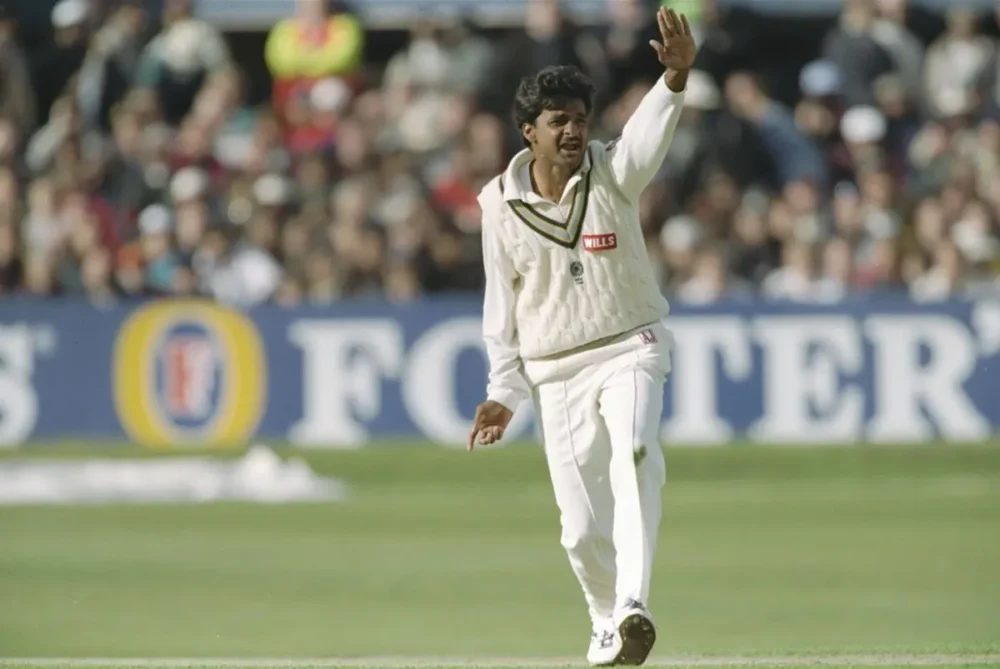
Javagal Srinath, an esteemed cricketer from India, is renowned for his prowess as a fast bowler and his contributions to the Indian cricket team during the 1990s and early 2000s. Born on August 31, 1969, in Mysore, Karnataka, Srinath’s journey to cricketing stardom is marked by his exceptional talent and unwavering commitment to the game. Making his international debut in 1991, Srinath quickly established himself as India’s premier fast bowler, with his ability to generate pace and seam movement troubling batsmen around the world. Despite being overshadowed by other legendary fast bowlers of his era, Srinath’s performances were instrumental in India’s success in both Test and ODI cricket. He played a pivotal role in several historic victories for India, including the famous victory against Australia in the 2001 Border-Gavaskar Trophy series. Over the course of his illustrious career, Srinath claimed over 600 international wickets across formats, cementing his place as one of India’s greatest fast bowlers. Beyond his on-field exploits, Srinath’s humility, professionalism, and leadership qualities endeared him to fans and teammates alike. After retiring from international cricket in 2003, Srinath continued to contribute to the sport as a match referee and commentator, further solidifying his legacy as a cricketing icon in India. Today, Javagal Srinath remains a revered figure in Indian cricket history, remembered for his remarkable skill, sportsmanship, and dedication to the game.
5. Mushtaq Ahmed (Pakistan)
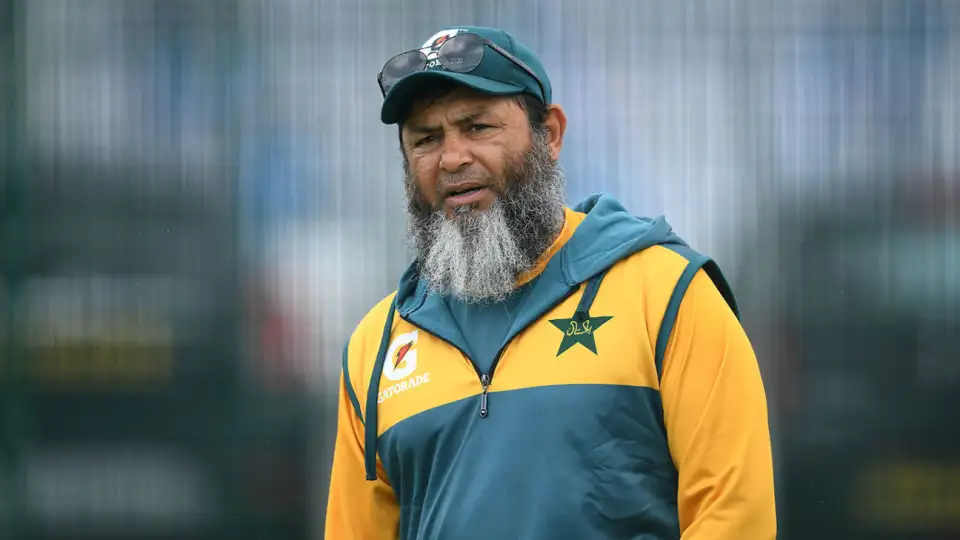
Mushtaq Ahmed, a legendary figure in Pakistani cricket, carved his name in the annals of the sport with his exceptional spin bowling skills and strategic prowess. Born on June 28, 1970, in Sahiwal, Pakistan, Mushtaq’s journey to cricketing stardom began in the streets of his hometown, where he honed his craft against makeshift wickets. His talent soon caught the eye of selectors, leading to his debut in international cricket in 1990. Mushtaq’s career reached its zenith during the 1992 Cricket World Cup, where his stellar performances played a pivotal role in Pakistan’s historic victory. Renowned for his deceptive googlies and lethal leg-breaks, Mushtaq became a nightmare for batsmen worldwide. His illustrious career saw him represent Pakistan in 52 Tests and 144 One-Day Internationals, where he amassed a staggering tally of wickets. Post-retirement, Mushtaq transitioned seamlessly into coaching, sharing his wealth of knowledge with the next generation of cricketers. Today, Mushtaq Ahmed remains an iconic figure, not only for his on-field exploits but also for his contributions to the development of cricket in Pakistan.
6. Robin Singh (India)

Robin Singh, a celebrated name in Indian cricket, etched his mark on the sport through his exceptional all-round abilities and unwavering commitment. Born on September 14, 1963, in Princes Town, Trinidad, Robin’s journey to cricketing prominence began on the lush fields of his native Trinidad, where he showcased his talent from a young age. His remarkable skills soon earned him recognition, leading to his debut in international cricket for India in 1989. Robin’s versatility as a cricketer was evident in his ability to excel both with the bat and the ball, making him a valuable asset to the team. His gritty performances in various formats of the game, particularly in One-Day Internationals, earned him a reputation as a dependable middle-order batsman and a crafty medium-pace bowler. Robin’s career saw him represent India in 136 ODIs and a solitary Test match, where he left an indelible mark with his contributions. Post-retirement, Robin transitioned into coaching, sharing his wealth of experience and knowledge with budding cricketers. Today, he remains an influential figure in the cricketing fraternity, admired not only for his on-field exploits but also for his dedication to nurturing the talents of the next generation of cricketers in India.
7. Vernon Philander (South Africa)
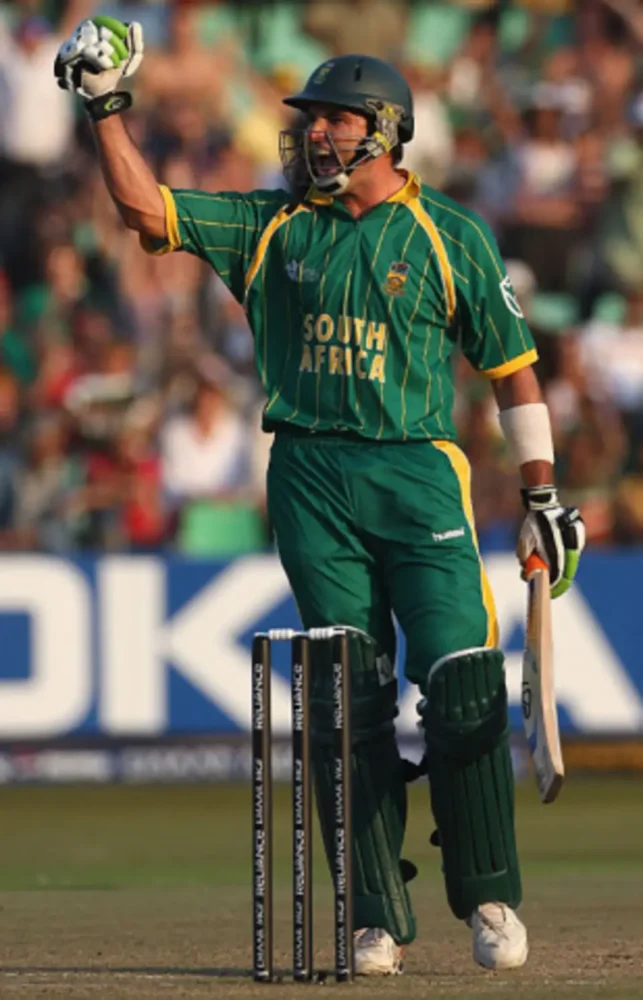
Born on June 24, 1985, in Bellville, South Africa, Philander’s journey to cricketing stardom began in the domestic circuit, where he consistently showcased his prowess with the ball. His exceptional ability to move the ball both ways at brisk pace earned him widespread recognition, leading to his international debut in 2011 against Australia. Philander’s impact on the international stage was immediate and profound, as he became known for his accuracy, relentless line and length, and the ability to exploit even the slightest of weaknesses in batsmen. His partnership with Dale Steyn and Morne Morkel formed the backbone of South Africa’s formidable pace attack during his tenure. Philander’s impressive record in Test cricket, where he consistently troubled batsmen with his seam movement and subtle variations, solidified his reputation as a premier fast bowler. Despite battling injuries at times, Philander remained a vital cog in the South African team until his retirement from international cricket in 2020. Post-retirement, he continues to contribute to the game through coaching and mentorship, leaving behind a lasting legacy as one of South Africa’s finest seam bowlers.
8. Darren Lehmann (Australia)
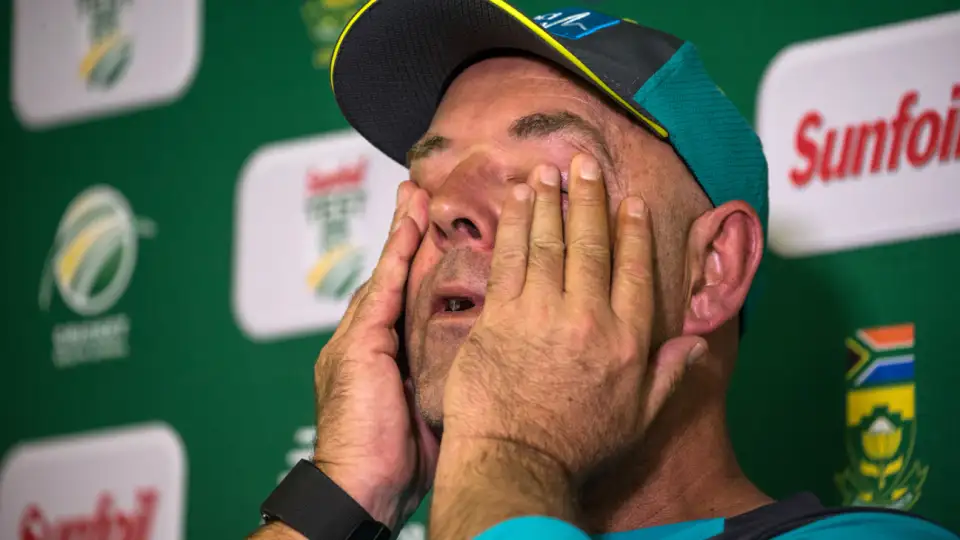
Born on February 5, 1970, in Gawler, South Australia, Lehmann’s cricketing journey began in the domestic circuit, where he showcased his prodigious talent as a left-handed batsman. His prolific run-scoring ability and remarkable consistency earned him a call-up to the Australian national team in 1996. Lehmann’s impact on the international stage was immediate, as he became known for his elegant stroke play and ability to counter both pace and spin with ease. His memorable performances in both Test matches and One-Day Internationals cemented his status as one of Australia’s batting mainstays during his tenure. Lehmann’s crowning moment came in 1999 when he played a pivotal role in Australia’s World Cup triumph, delivering crucial innings under pressure. Post-retirement from playing, Lehmann transitioned into coaching, where he achieved further success, guiding the Australian team to numerous victories, including the 2015 Cricket World Cup title.
9. Rangana Herath (Sri Lanka)

Following in the footsteps of Muttiah Muralitharan, Herath emerged as Sri Lanka’s premier spin bowler, but his achievements didn’t always receive the recognition they deserved on the global stage. Rangana Herath, a maestro of spin bowling from Sri Lanka, etched his name in cricketing folklore with his guile, skill, and unwavering determination. Born on March 19, 1978, in Kurunegala, Sri Lanka, Herath’s journey to cricketing greatness began in the domestic circuit, where he honed his craft as a left-arm spinner. Despite facing stiff competition in a team boasting legends like Muttiah Muralitharan, Herath’s perseverance and talent eventually earned him a spot in the Sri Lankan national team. His international debut came in 1999, and though he initially struggled to cement his place, Herath’s resilience paid off as he evolved into one of Sri Lanka’s most potent bowling weapons. Herath’s mastery over flight, turn, and subtle variations made him a nightmare for batsmen across the globe, particularly in Test cricket where he thrived as a match-winner. Following the retirement of Muttiah Muralitharan, Herath assumed the mantle of Sri Lanka’s premier spinner, shouldering the responsibility with aplomb. His crowning achievement came in 2016 when he became the most successful left-arm spinner in Test cricket, a testament to his longevity and skill.
10. Shivnarine Chanderpaul (West Indies)

Despite being one of the most prolific run-scorers in West Indies cricket history, Chanderpaul’s unorthodox batting style and consistent performances often went underappreciated. Shivnarine Chanderpaul, a cricketing stalwart from the West Indies, carved his name as one of the most tenacious and resilient batsmen in the history of the game. Born on August 16, 1974, in Unity Village, Guyana, Chanderpaul’s cricketing journey began in the vibrant cricketing culture of the Caribbean. Making his international debut in 1994, Chanderpaul quickly established himself as a mainstay in the West Indian batting lineup with his unorthodox yet effective batting technique and unparalleled ability to occupy the crease for extended periods. His remarkable ability to anchor innings, often under challenging circumstances, earned him the admiration of fans and peers alike. Chanderpaul’s illustrious career spanned over two decades, during which he amassed over 20,000 runs in international cricket across all formats. His penchant for delivering when the team needed it most, coupled with his unflinching resolve at the crease, made him a true match-winner for the West Indies. Despite retiring from international cricket in 2016, Chanderpaul’s influence on Caribbean cricket endures, as he continues to contribute to the game as a coach and mentor, inspiring future generations with his dedication, perseverance, and unwavering commitment to excellence.
These players, among others, have left an indelible mark on the game of cricket, yet their contributions are sometimes overlooked in discussions about cricketing greatness.



